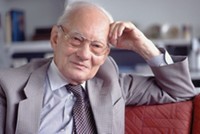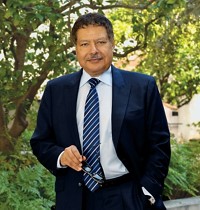Advertisement
Grab your lab coat. Let's get started
Welcome!
Welcome!
Create an account below to get 6 C&EN articles per month, receive newsletters and more - all free.
It seems this is your first time logging in online. Please enter the following information to continue.
As an ACS member you automatically get access to this site. All we need is few more details to create your reading experience.
Not you? Sign in with a different account.
Not you? Sign in with a different account.
ERROR 1
ERROR 1
ERROR 2
ERROR 2
ERROR 2
ERROR 2
ERROR 2
Password and Confirm password must match.
If you have an ACS member number, please enter it here so we can link this account to your membership. (optional)
ERROR 2
ACS values your privacy. By submitting your information, you are gaining access to C&EN and subscribing to our weekly newsletter. We use the information you provide to make your reading experience better, and we will never sell your data to third party members.
People
A Chemical Legacy
Chemical Heritage Foundation honors five trendsetters who advanced science and business
by Marc S. Reisch
June 15, 2009
| A version of this story appeared in
Volume 87, Issue 24

At what has become an annual rite of spring, the Chemical Heritage Foundation (CHF) hosted awards ceremonies on May 14 for five science and business leaders at its eighth annual Heritage Day in Philadelphia.
The festivities began with an 11:30 AM reception for the award winners and lasted past 9 PM. First up, Ahmed M. Zewail, the 1999 Nobel Laureate in Chemistry, received the Othmer Gold Medal at a luncheon in his honor. More than 160 people attended to hear the California Institute of Technology chemistry and physics professor speak about his fascination with chemistry and the invisible world of chemical reactions that he helped elucidate with an ultrafast laser technique that created the field of femtochemistry.
During an afternoon awards ceremony, nearly 130 people watched as David Schwartz, a founder of reagents and clinical diagnostics firm Bio-Rad Laboratories, accepted the Richard J. Bolte Sr. Award for Supporting Industries, which was bestowed upon him and his wife and Bio-Rad cofounder, Alice Schwartz. David spoke about his and Alice's luck in being in the right place at the right time for business success.
Also at the afternoon ceremony, 2007 Nobel Laureate in Physiology or Medicine Oliver Smithies received the American Institute of Chemists' Gold Medal. Smithies told the audience how he "accidentally" improved gel electrophoresis, a process of separating proteins or nucleic acids by using starch.
Then, after a cocktail reception, about 115 stalwart diners feted Zsolt Rumy, chairman, president, and chief executive officer of carbon fiber maker Zoltek, who received the Chemists' Club's Winthrop-Sears Medal. Rumy, a Hungary-born entrepreneur, described his journey from working as a process engineer at Monsanto to heading his own company and his entrepreneurial endeavors at the head of his own company to lower the cost of carbon fibers.
Zewail is the 12th recipient of the Othmer Gold Medal, which was set up in 1997 to honor those who have made outstanding contributions to chemistry and science. Sponsors of the medal include not only CHF, but also the American Chemical Society, the American Institute of Chemical Engineers, the Chemists' Club, and the Société de Chimie Industrielle.
Thomas R. Tritton, CHF president and CEO, noted that Zewail "moved beyond speculation by inventing the laser-based tools that allow chemists to study reactions in real time." Tritton also noted that Zewail "is a tireless advocate for science education for the entire world."
In his talk, Zewail recounted how he first became fascinated by the invisible world of chemical reactions. As a young boy in Egypt, he conducted an experiment at home and was enthralled as he watched what happened when he burned a sliver of wood in a test tube. Zewail recounted that his mother feared he might burn down the house, but the experiment motivated him to want to better understand what happened as the wood in the test tube dried, emitted gases, and glowed in the flame.
He got the opportunity to advance his studies toward that goal when he came to the U.S. in the late 1960s. At that time, the country was "consumed by a fascination with basic science," Zewail remembered. It was a time when transistors were still new and the U.S. successfully put NASA astronauts Neil Armstrong and Buzz Aldrin on the moon. Zewail ultimately went to Caltech where he furthered his efforts "to get at the dynamics of matter" by using laser beams to freeze images of atoms in motion, leading to the discipline of femtochemistry.
After that discovery, Zewail said, people expected him to retire. But he had another dream: to capture images of molecules in motion in real time. That interest has led Zewail and colleagues to invent four-dimensional ultrafast electron microscopy, a technique that may help unravel how biological systems function (C&EN, Dec. 24, 2007, page 36).
After his speech, Zewail told C&EN that he doesn't think his first project, which ultimately led to the development of femtochemistry, would have been funded today. "We expect too much of science today. We want it to be immediately relevant." He went on to say that "it was sheer intellectual curiosity that drove science when I came here in the 1960s." And he suggested that funding of projects that may not seem to have any immediate payback may in the long run lead to tangible benefits.
However, he was optimistic about the future of scientific research in the U.S. "I'm delighted that the President plans to raise science funding to 3% of the federal budget," he said. At the end of April, President Barack Obama appointed Zewail to the President's Council of Advisors on Science & Technology. Zewail added that in joining the council he hoped to advance the cause of science and science education not just in the U.S., but also globally.
In his talk after receiving the Richard J. Bolte Sr. Award for Supporting Industries, David Schwartz advised entrepreneurs to "start in business as young as possible, live as long as possible, and be lucky." Without any business experience, he and Alice launched Bio-Rad in 1952 by marketing tobacco mosaic virus to researchers. Although that initial product offering was not successful, the two refined their offerings and built a company to accelerate scientific discovery by providing products and tools to researchers. Bio-Rad had sales of $1.7 billion last year.
Schwartz told C&EN he is constantly looking for new products to enhance Bio-Rad's offerings. And he said he was interested in licensing Zewail's new 4-D ultrafast electron microscope from Caltech.
In his acceptance speech following the award of the American Institute of Chemists' Gold Medal, Smithies says he first became familiar with the properties of starch when as a young child he helped his mother do laundry. Long before the days of permanent-press clothing, the two cooked starch into a gel that they used to press the wrinkles out of shirts. Years later as a researcher at the University of Toronto, he greatly improved starch electrophoresis "quite by accident," by using the starch gel he remembered from his boyhood to replace an electrophoresis method that at the time used starch grains. His innovation simplified the process of separating proteins and identifying genes.
When C&EN asked whether students have the same opportunities to advance science today as they had when he went into academia, Smithies was not especially encouraging. He said many students today are "less willing to buckle down and do the hard work to learn chemistry." Further, students today "don't have the same fire in their belly" as when he grew up and went into biochemistry. "They are more interested in business and making an easy buck," he said.
Rumy, recipient of the Chemists' Club's Winthrop-Sears Medal, said in his speech that when he went to college, his father discouraged him from getting a degree in business. It was the early 1960s, when the Cold War struggle between the U.S. and Russia was an everyday worry.
Remembering the tenor of those times, when he was a chemical engineering student at the University of Minnesota, Rumy said, "My father warned me that when the Russians take over the U.S., the engineers will still have jobs." In building Zoltek, Rumy said he flirted with bankruptcy a number of times but persevered and succeeded in lowering the cost of what once were very expensive and specialized carbon fibers. He hopes to see carbon fibers used as reinforcements in composite panels for a new generation of lightweight, energy-efficient cars.
Building a business was not easy, Rumy told C&EN. And despite the economic downturn, he says he believes that young entrepreneurs, especially engineers with a talent for business, have as many opportunities today to build a successful business as when he started out.
Although the Chemical Heritage Day award recipients were well advanced in their careers, they all still believed they had much left to do and to give. The award ceremonies were not just a rite of spring, they were an affirmation of the regenerative and transformational properties of the enabling science—chemistry.




Join the conversation
Contact the reporter
Submit a Letter to the Editor for publication
Engage with us on Twitter